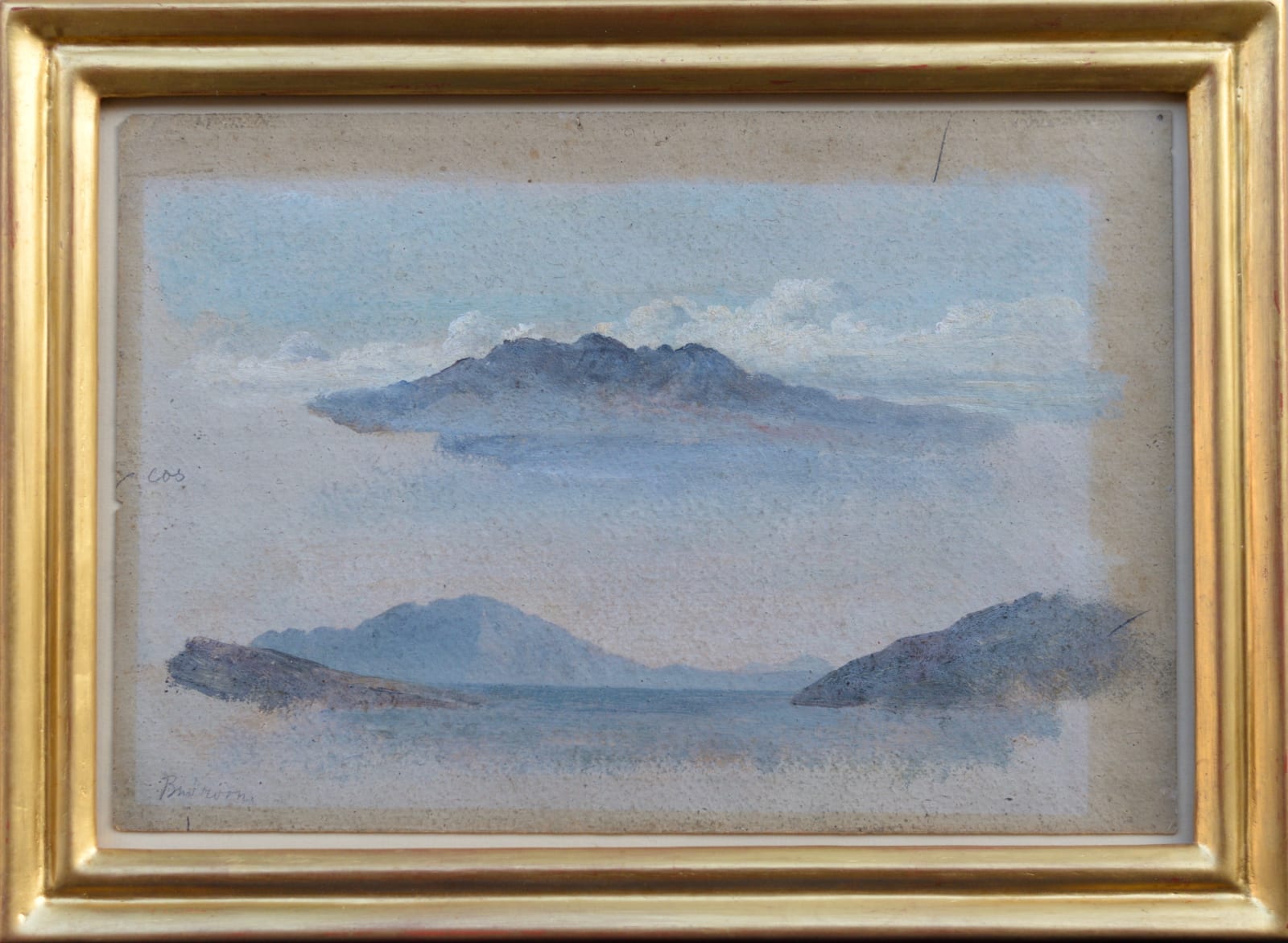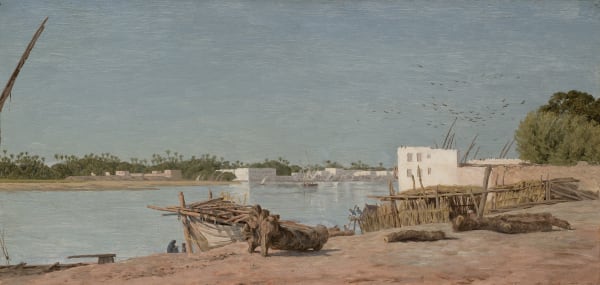George Frederic Watts (1817-1904)
Provenance
GF Watts, Limnerslease Sale, 13 March 1939;
Private Collection, Denmark
Watts left England in the autumn of 1856 with the artists Val Prinsep and Spencer Stanhope to join the archaeologist Sir Charles Newton, who was excavating the Mausoleum of Halicarnassus (now Bodrum) on the west coast of Turkey. Their outward journey aboard HMS Gorgon took them first to Smyrna, then southwards through the Dodecanese to Kos, and finally to Bodrum, ten miles to the north west. This spontaneous sketch was done on board the British warship, where the sailors knew him as 'Betty'. Watts stayed in the Eastern Mediterranean until May of 1857, visiting Constantinople and Athens and exploring the islands of the Aegean on various ships of the Royal Navy.
The trip stayed fresh in his mind for decades and inspired other paintings, including The Genius of Greek Poetry (1878) and The Minotaur (1877-1886). In 1883 he exhibited a larger painting of The Isle of Cos, with the island in the background and a butterfly perched on classical ruins in the foreground. It refers to Shelley's poem Ozymandias, about the impermanence of man's achievements, in which, according to the artist, the butterfly signifies man's immortal soul.
The Maas Gallery, 6 Duke Street, St. James's, London, SW1Y 6BN
+44 (0) 20 7930 9511 | mail@maasgallery.com
This website uses cookies
This site uses cookies to help make it more useful to you. Please contact us to find out more about our Cookie Policy.




